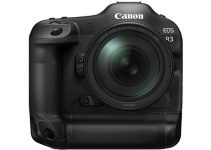Something that almost never gets old is watching professionals duke it out against beginners and amateurs. Sometimes it’s fun to see how much better they do or how surprisingly good some random person off the street can actually be. The best options are to stack the deck against the pro, which in the video world usually means saddling them with some cheap camera.
Coming at us from Parker Walbeck of Full Time Filmmaker is one of the most lopsided challenges I’ve seen in a good while: giving a beginner a $30,000 RED cinema camera while leaving the pro with a decidedly average $600 DSLR. It’s the intern versus the vet to settle again whether gear is the most important or whether it is the skill of the people behind the camera.
The intern, Josh Blauer, has about 5 weeks of training, while the vet, Jake Weisler, is coming in with over 5 years of experience.
Blauer has a nicely outfitted RED DSMC2 series camera – and some help with figuring out how to operate it – and Weisler has a Canon Rebel SL2.
Both will be making a short 20-30 second commercial for Taft boots and will have an hour to shoot followed by a day of editing.
For more detailed specs on the equipment here, the RED DRAGON is what it looks like they have and that can record up to 6K raw with an impressive 16.5 stops of dynamic range. For optics, it has a Sigma 18-35mm T2 Cine Lens.
The Canon SL2 is only able to record in Full HD up to 60p using a heavily-compressed codec with limited dynamic range. Completing this kit is the 18-55mm f/3.5-5.6 kit lens and a nifty fifty. Ground rules are that when one person is shooting the other is off set, meaning no accidental copying of the other.
Both quickly found some issues with their respective kits. Weisler saw how limited the dynamic range of the DSLR was while Blauer had his own issues with such a heavy and battery-hungry setup. They did seem to get some good footage based on the quick previews. That shouldn’t be too surprising.
Now to watch the commercials!
The intern was up first and turned in something seriously impressive for just 5 weeks of training. It was clean and compared to working with a phone having a pricey camera with shallow depth of field and huge dynamic range can just help boost overall quality without much practice.
Having an intern turn in a solid piece is always great to see, however, Weisler’s take on the commercial was incredible considering the camera used.
If you didn’t know going into this and were watching on YouTube (which you are) where the compression serves as an equalizer, you almost couldn’t tell the camera was so much cheaper.
As Walbeck sums it up, you do have to put in the hours. If you shoot and edit more you’ll get better at it. It’s almost that simple. Sure, gear helps down the line, but you have to start with the basics.
Looking into the backend of the productions, Weisler revealed a lot more work was put into the grading and editing just to get the footage looking okay. Adding stabilizers, masking out the areas, and doing a lot of layer work to make it happen.
Compared to Blauer’s RED footage this additional editing work actually helped bring out more color. You can imagine that if a pro had access to all that extra information they could make the footage look that much better. You have to know how to work with your equipment.
The next differentiating factors also included the more cinematic approach to shooting and being able to add depth and guide the viewer through the variety of shots.
Focusing in on the boots throughout was a very important aspect compared to the intern’s work. The intern’s footage showed some more shots of just the model or scene, whereas the vet turned in shots that were definitely drawing attention to the boots, which was the purpose of this test.
Finally, the basic technicals were shown. Blauer’s inexperience working with a cinema camera showed with some slightly out-of-focus shots in the footage. All these smaller things definitely add up, so if you practice and learn what you need to do you will improve.
Again, we found the gear doesn’t make all the difference. It can help, but you have to know how to make the most of the gear to really upgrade your filmmaking.
[source: Parker Walbeck]
Order Links:
Disclaimer: As an Amazon Associate partner and participant in B&H and Adorama Affiliate programmes, we earn a small comission from each purchase made through the affiliate links listed above at no additional cost to you.



